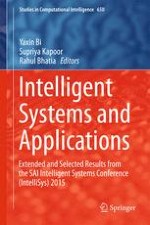This book is a remarkable collection of chapters covering a wider range of topics, including unsupervised text mining, anomaly and Intrusion Detection, Self-reconfiguring Robotics, application of Fuzzy Logic to development aid, Design and Optimization, Context-Aware Reasoning, DNA Sequence Assembly and Multilayer Perceptron Networks. The twenty-one chapters present extended results from the SAI Intelligent Systems Conference (IntelliSys) 2015 and have been selected based on high recommendations during IntelliSys 2015 review process. This book presents innovative research and development carried out presently in fields of knowledge representation and reasoning, machine learning, and particularly in intelligent systems in a more broad sense. It provides state - of - the - art intelligent methods and techniques for solving real world problems along with a vision of the future research.
